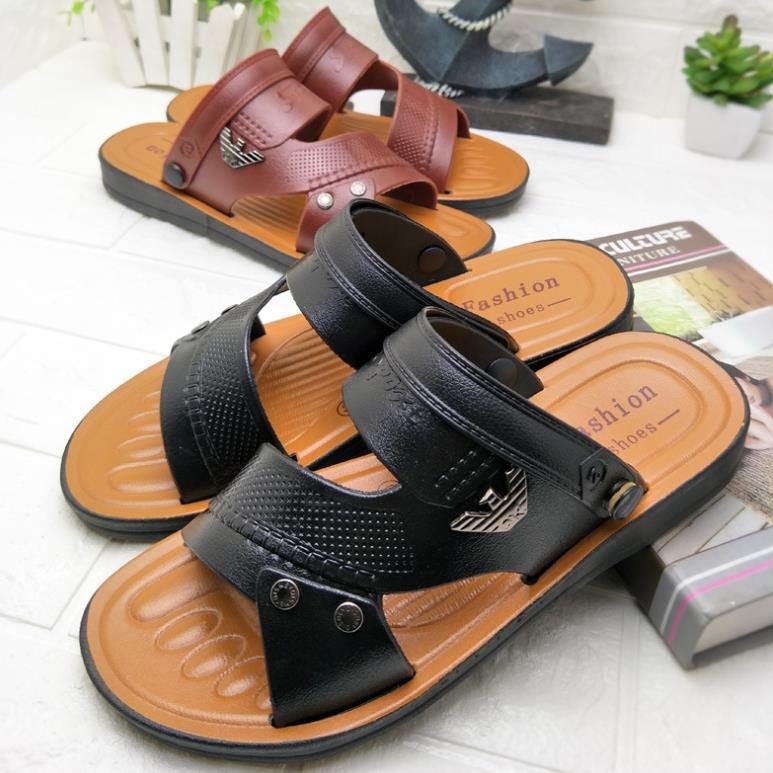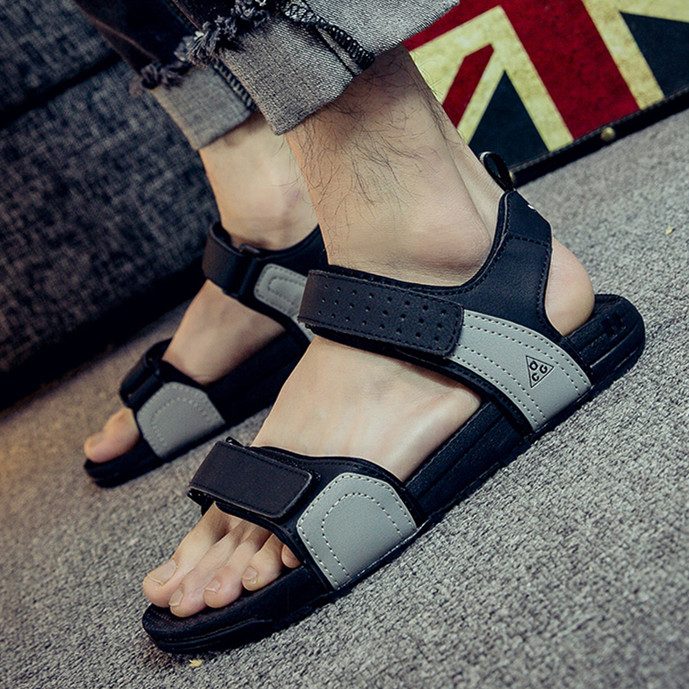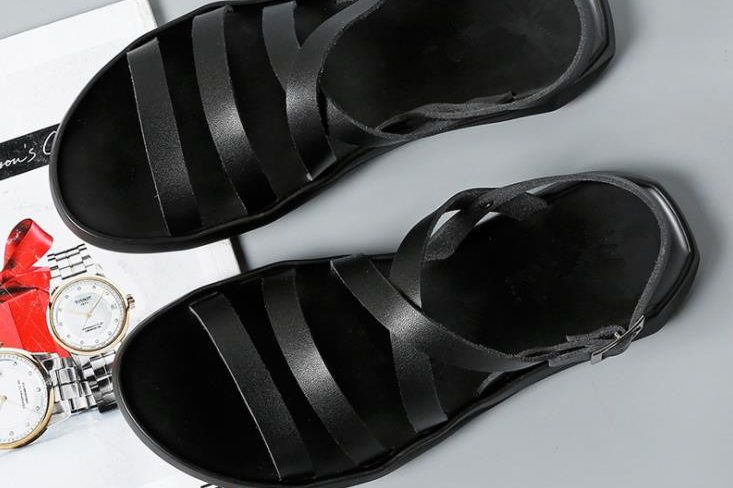Selection of leather sandals:
(1) Check the upper and the shoes. First of all, check whether the upper material meets the requirements. Common leather materials are cow leather, pig leather, and sheep leather. The surface of the cowhide should be smooth, fine particles and high strength; the artificial leather (similar leather, synthetic leather, etc.) are relatively smooth. The high-quality shoes are fine and bright, the main parts are no color, no disability, the fingers are not loose after the back skin, the coating layer does not fall off, does not crack, and the material in the shoes should also be in natural leather.
(2) Check the sole. The sole material mainly includes rubber plastic, rubber, and other materials, polyurethane (PU), natural leather and the like. Generally, check whether the sole is flat, the pattern is clear, use the nail to gently press the sole, the quality of the sole is elastic, moderate hardness, no peeling. If there is peeling, dead hardness, and no elasticity, such soles have low gel content, are not durable, and are easily broken.
(3) Check the heel, the heel should be installed firmly, the hand should not be deformed or lose, and the heel should be flat. The shoes can be placed flat on the counter. The shoes with good quality should be stable. The heel should be in contact with the table. The hands should not be shaken. The height of the heel should be the same.
(4) Check the hook. The hook is a key part that is installed between the outsole and the inner midsole of the leather shoe. The shoe is placed on a firm table, and the shoes are not soft or deformed.
(5) Check the main heel and the Baotou. The main part is the key component of the rear set, which is installed between the upper of the heel and the shoe; the toe cap is a shaped part of the toe, which is installed between the front upper and the upper. When inspecting, you can press (push) the main heel and the toe cap with your fingers, and the high-quality shoes should withstand pressing. Insert the hand into the shoe to check if the installation position is correct. If you can directly contact the main heel or the head material, the process is unreasonable.
(6) Try to wear it every time you buy a shoe, and try to wear both feet. Buy the shoes according to the biggest one.
Leather sandals are footwear products that combine a band of natural leather and artificial faux leather with a sole made of various materials by various techniques. It is China’s advantageous industry–a branch of leather shoes, which is both a seasonal product and one of the main varieties in daily consumer goods. Because of its comfortable…
How to identify whether the sandals is leather or fake?
Hand touch: that is, touch the surface of the leather with your hand. If it is smooth, soft, full, and elastic, it is the leather. However, synthetic artificial leather has a blemish, a rigid plate, and poor softness.
Seeing: the real leather surface has clearer hair and patterns. The yellow cowhide has finer pores. The yak leather has thick and sparse pores. The goatskin has fishy scale pores.
Smell: All leather has a leather smell; artificial leather has a strong plastic smell.
Ignition: A little bit of fiber is torn off from the back of real leather and artificial leather. After ignition, all the pungent smell is made of artificial leather; any hair that smells hair is not hard.
With the above four basic identification methods, it is obvious to compare and identify artificial leather and synthetic leather. In addition, artificial leather and synthetic leather have the following characteristics:
1, Press the leather surface with your fingers. There are no obvious pore wrinkles. If there are wrinkles after pressing, it will not disappear naturally.
2, Leather surface without pores, this is an important feature to identify the true and false leather.
3, Cut the corner burning, smelly, but not the hairy smell.
With these methods, whether you go to the sandals manufacturer wholesale or go to the store to buy leather sandals, you don’t have to worry about buying something you don’t like.









